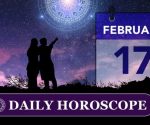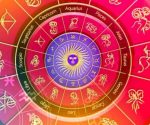When is Burns Night 2022? Why we celebrate birth of Robert Burns
[ad_1]
Tomorrow, Scottish people will be celebrating Burns Night by observing some Scottish traditions and eating the poets’ favourite foods. What are the Burns Night traditions? And why do Scottish people celebrate Robert Burns’ birth?
Burns Night is celebrated on January 25 every year to commemorate the Scottish poet Robert Burns.
This year, Burns Night celebrates what would have been Burns’ 262nd birthday.
A traditional Burns Night celebration involves poetry, haggis, neeps and tatties and a few drams of whisky.
What happens on Burns Night?
The celebration held on Burns Night is known as the Burns Supper.
READ MORE: Meghan Markle uses surprising technique to ‘command’ attention
The story goes in 1801, some of Robert Burns’ closest friends met to reminisce about their friend, five years after his death.
They remembered Robert Burns by eating his favourite food, haggis, performing some of his poems and making a speech in honour of the poet.
Over the years, people have found new traditions and different ways of celebrating Burns Night, some like to have a dinner in the dark, or attend a Ceilidh.
A traditional Burns Night supper would begin with saying the Selkirk Grace – a prayer Burns wrote to be said before eating.
The Selkirk Grace, written in Burns’ traditional Scots, said:
“Some hae meat an canna eat,
And some wad eat that want it;
But we hae meat, and we can eat,
And sae the Lord be thankit.”
After saying grace, another poem has to follow, this time toasting the arrival of the main course: haggis, neeps and tatties.
Burns’ poem Address to a Haggis is read by the host as the meaty dish arrives.
Haggis is a dish made of offal – commonly a sheep’s heart, liver and lungs – cooked with onions, spices and other seasonings.
DON’T MISS:
Horoscopes & love: Taurus has ‘a lot to look forward to’ this year [INSIGHT]
Brexit farce: red tape makes exporting Haggis to CANADA easier than EU [UPDATE]
Burns Night celebrations for a dazzling year of Scottish culture [TIPS]
Neeps and tatties – turnips and potatoes – are typically served alongside the haggis, and it’s all washed down with a dram of Scotch whisky.
After eating the meal, there are more readings: a speech called the Immortal Memory and more poems are recited.
Then there’s a Toast to the Lassies – a humorous speech about women and their influence over men, with some lines from Burns thrown in – followed by a Reply to the Toast of the Lassies – where women get to make their reply.
The evening is finished off by everyone singing one of Burns’ most famous works, the song Auld Lang Syne.
Who is Robert Burns?
Robert Burns – perhaps better known as Robbie or Rabbie Burns – is Scotland’s most famous poet.
Born in Alloway, Ayrshire, in 1759, Rabbie was pretty uninterested in life on his parent’s farm and pursued his passion for poetry, women and drinking instead.
Over his life, Burns fathered a rumoured 13 children – some legitimate and some illegitimate – once his poems became acclaimed when he was aged 27, he spent time in Edinburgh before moving to Dumfries.
Rabbie wrote the song now sung all over the world on New Year’s Eve – Auld Lang Syne – and even wrote an ode dedicated to the national dish of Haggis – To a Haggis.
Much of Rabbie’s work is devoted to his love of Scotland, its culture and traditions, so it’s little surprise he’s become a national hero, affectionately nicknamed the Bard of Scotland and the Ploughman’s Poet.
[ad_2]
Source link










